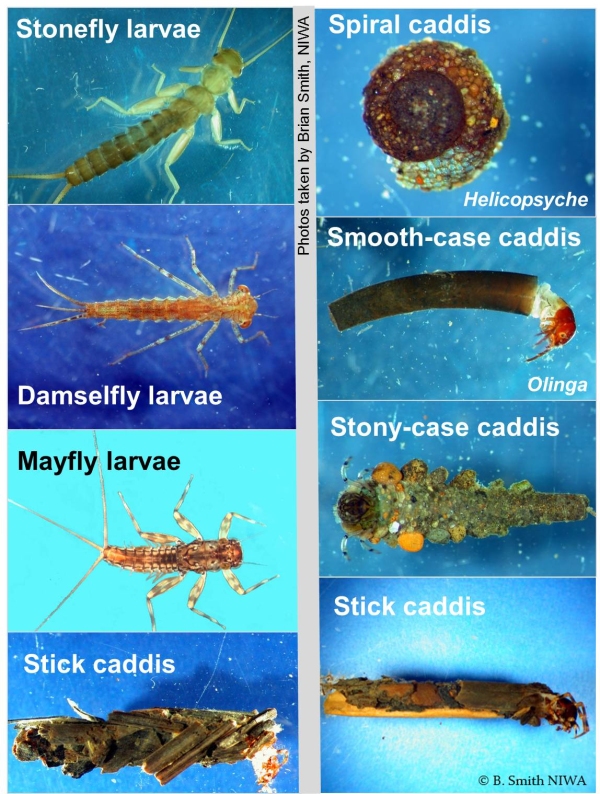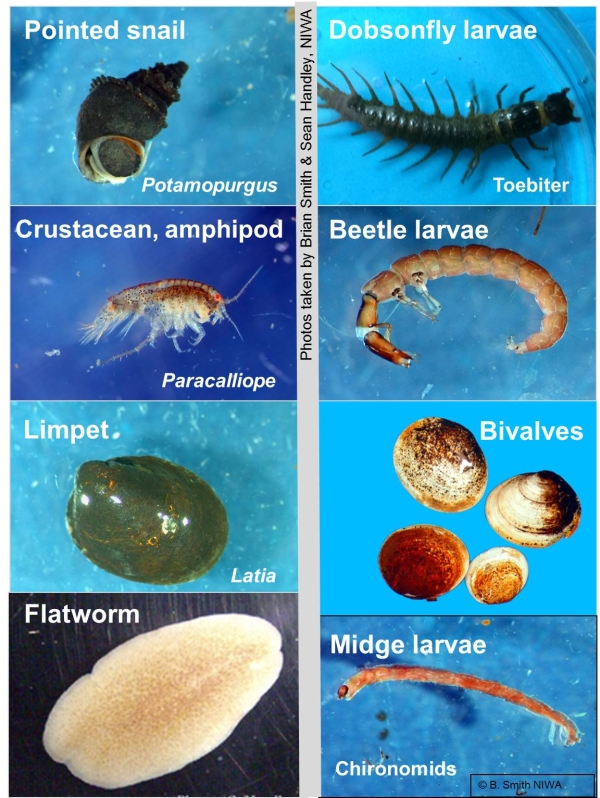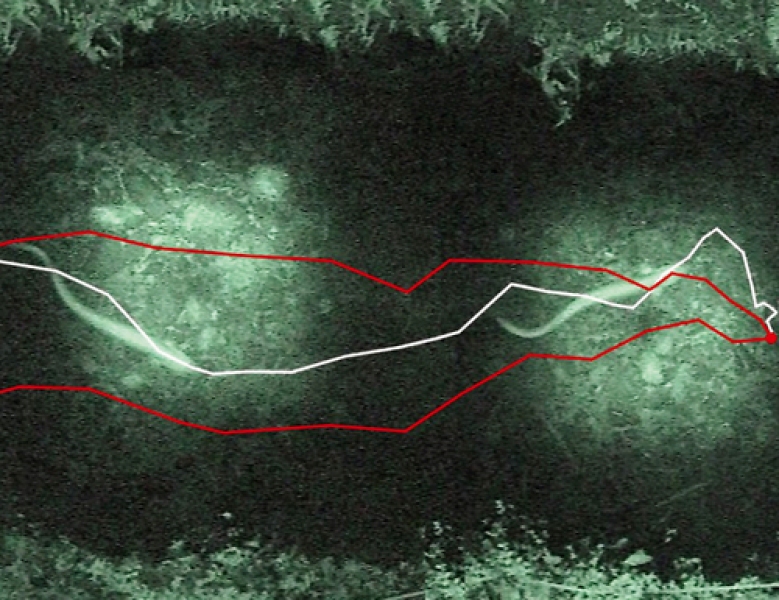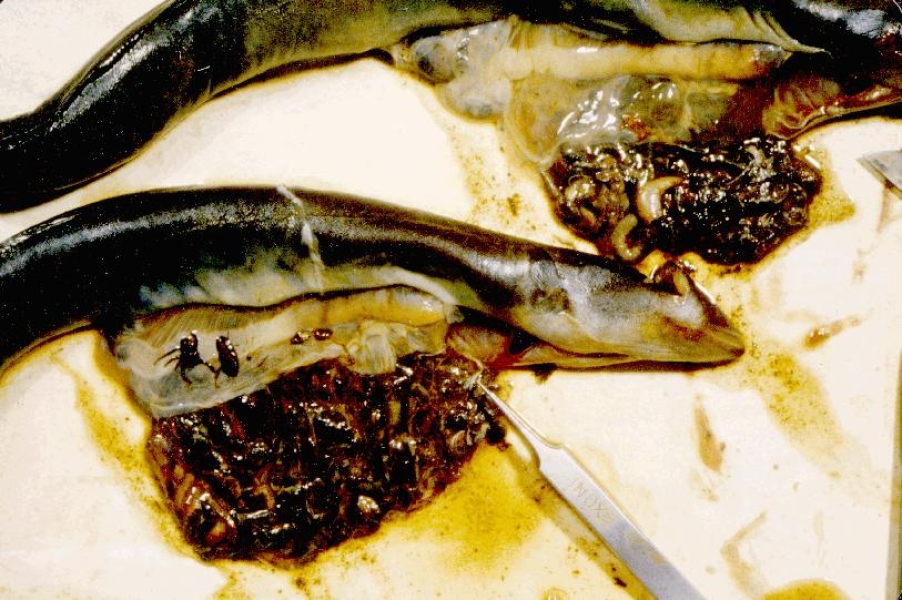Longfin eels are the largest and longest-lived fish in New Zealand's freshwaters, and where they are present they are the top predator.
Tuna are opportunistic feeders, usually eating anything they can find. What they eat depends on their size (and therefore the size of their mouth), the habitat occupied, and the prey available.
Although they have fairly poor eyesight, they find their kai using their powerful sense of smell. Tuna are usually more active at night and rest during the day. Feeding slows down during cold temperatures (<10°C).
Small eels eat a range of invertebrates, including small insect larvae, snails, midges and crustaceans. As their mouths get bigger, they can also eat larger animals such as kōura (freshwater crayfish, also known as kēwai), fish (including smaller eels), small birds and rats.
Tuna thrive when it floods – flooded river margins are important feeding grounds for them. During a flood, eels will move out of the main river channel to the margins where they eat as much as they can, filling up organisms not usually found in the water like earthworms and beetles.
References and further reading
Cairns, D. (1942). Life history of the two species of freshwater eel in New Zealand. II. Food, and interrelationships with trout. New Zealand Journal of Science & Technology 23(4): 132-148.
Carton, A.G., Montgomery, J.C. (2003). Evidence of a rheotactic component in the odour search behaviour of freshwater eels. Journal of Fish Biology 62(3): 501-516. http://onlinelibrary.wiley.com/doi/10.1046/j.1095-8649.2003.00015.x/abstract
Chisnall, B.L. (1987). Juvenile Eel Biology in the Backwaters of the Waikato River. Master of Science thesis, University of Waikato, New Zealand. 152 p.
Chisnall, B.L. (2000). Utilisation of flood plains by New Zealand freshwater eels. NIWA Client Report: CEE01201. Prepared for Central Eel Enhancement Co Ltd. 15 p.
Jellyman, D.J. (1989). Diet of two species of freshwater eel (Anguilla spp.) in Lake Pounui, New Zealand. New Zealand Journal of Marine and Freshwater Research 23: 1-10. http://www.royalsociety.org.nz/publications/journals/nzjm/1989/001/
Jellyman, D.J. (1996). Diet of longfinned eels, Anguilla dieffenbachii, in Lake Rotoiti, Nelson lakes, New Zealand. New Zealand Journal of Marine and Freshwater Research 30: 365-369. http://www.tandfonline.com/doi/pdf/10.1080/00288330.1996.9516723
Jellyman, D.J., Todd, P.R. (1982). New Zealand Freshwater Eels: Their Biology and Fishery. Information Leaflet 11. Fisheries Research Division, New Zealand Ministry of Fisheries. 1-19.
Kangur, K., Kangur, A., Kangur, P. (1999). A comparative study of the feeding of the eel, Anguilla anguilla (L.), bream, Abramis brama (L.) and ruffe, Gymnocephalus cernuus (L.) in Lake Vortsjarv, Estonia. Hydrobiologia 408/409: 65-72.
McDowall, R.M. (1990). New Zealand Freshwater Fishes - A Natural History and Guide. Heinemann Press, Auckland.
McDowall, R.M. (2000). The Reed Field Guide to New Zealand Freshwater Fishes. Reed Publishing (NZ) Limited. 224 p.
Sagar, P.M., Glova, G.J. (1994). Food partitioning by small fish in a coastal New Zealand stream. New Zealand Journal of Marine and Freshwater Research 28: 429-436.
Sagar, P.M., Glova, G.J. (1998). Diel feeding and prey selection of three size classes of shortfinned eel (Anguilla australis) in New Zealand. Marine and Freshwater Research 49: 421-428. http://www.publish.csiro.au/paper/MF97154




